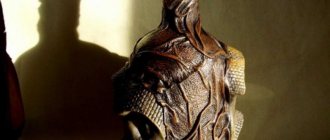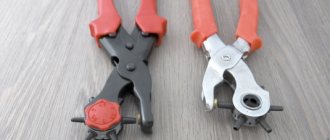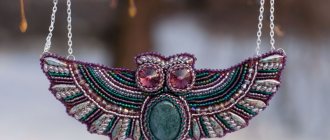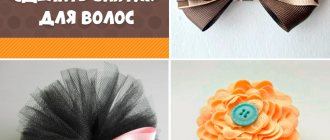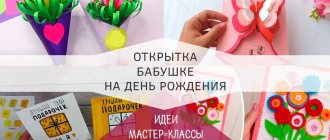The final result of embossing.
We prepare the leather for embossing, mark and cut out pockets.
We put our own cliche, if available.
We repeat the embossing of the main part.
Let the skin dry. Tip: You can speed up the drying process with a hairdryer. It is not advisable to do this if you have time. If you still decide to use a hair dryer, try to dry it in such a way that the skin does not heat up too much. High temperatures have a bad effect on natural leather and dry it out.
Coloring the skin
We dye the leather the color you want. Special dyes for genuine leather are used. Apply several coats and let the paint dry before applying the next coat. Drying does not take much time, especially for alcohol-based paints. For application, you can use sponges (suitable for washing dishes), brushes, preferably a squirrel or a pony, but not a goat - the bristles are hard, special wool swabs for applying paint (very convenient, but relatively expensive), cotton mugs for removing makeup, cotton swabs and things like that. Be careful with mugs and chopsticks, they may leave lint. I will paint with an airbrush.
A smooth transition is required. I will use dark brown paint.
Tip: You can achieve a light brown color using an oil-based cream using natural wax. It’s not difficult to make it yourself (I’m planning to make a master class). It’s even easier to get a brown tint by brushing it with vegetable oil and letting it “tan” for a day in the sun. Oil is already dark, but “tanned” is even darker. I used flaxseed oil. Make sure that the paint does not bleed through from the reverse side, otherwise you will have to paint the bakhtarma too, and this is an extra waste of paint and time. Therefore, when painting, do not apply paint generously. It's better to go slow than to get upset about painting through it.
Tip: if you paint small parts or edges with a paint different from the main color, then dip the tip of the brush into the paint (it is advisable to use Squirrel No. 1 or Pony No. 1, ponies are cheaper) or blot the excess paint on a napkin.
Start painting from a wide area to a narrower one, or towards the edge rather than away from it. Otherwise, you can paint something you don’t want to. Let the paint dry well. It doesn't take much time. The manufacturer for alcohol-based paints indicates 6 minutes for drying one layer.
We apply a finishing agent (a finishing agent. It covers the paint so it doesn’t get dirty, closes the pores of the skin, increases wear resistance, gives extra shine, etc.). I will apply it with an airbrush in two layers with intermediate drying of the layer.
The materials for applying finishing are the same as for painting. The only thing is that I do not recommend using cotton swabs and the like made of cotton wool to apply the finish. The lint will remain and is very difficult to remove.
When you apply the finish, make sure there is no excess on the sponge. The finishing agent consists of a mixture of waxes and a diluent. Therefore, the excess (wax mixture) will dry on the skin in stripes. Most likely it won't be possible to fix it. Excess on the sponge, blot on a cloth or napkin.
Remove the tape. Tip: Remove the tape after painting and finishing. This will reduce the likelihood of getting the bakhtarma (wrong side) dirty.
We cut out the part, having first measured it again. The part may “shrink” by 1-2 mm.
Round off the edges. Let's use this tool. It's called a corner trimmer. I round the edges with a 10mm trimmer.
Can be replaced with a coin. Place a coin on the edge (pre-mark an equal distance from the corner in each direction. You can use coins of different denominations. The larger the coin, the larger the corner you can cut). We cut off the excess with a knife. You can not touch the corners at all or cut off a small edge (2 millimeters) with a knife. It doesn't look bad either. In general, whatever you like.
And again about fabrics
How to make a notebook cover with your own hands for someone whose hobby is sewing? If you are a textile lover and have a certain amount of bright unusual fabric in stock, then you can decorate with it not only a notebook, but also almost any book, personal diary, sketchbook - everything, even a passport.
Even if you don’t have a sewing machine, it doesn’t matter, small pieces of fabric can be sewn perfectly by hand. The fabric for the back side of the product can be simpler, for the front side it can be more elegant and expensive. Of course, you should have pins, needles, threads and scissors on hand, without which not a single textile product can be made.
During the manufacturing process, we cut the fabric, obtaining two rectangles of equal size. The smaller side of each should match the height of the notebook, with a couple of centimeters added for allowance and about 5 millimeters for a loose fit. The long side of the rectangle is equal to twice the width of the notebook, to which its thickness is added, five centimeters on each side for the hems and a centimeter for the seam allowances.
Processing bakhtarma
Of course, you can leave the bakhtarma in its original form if it is roughed (part of the bakhtarma is cut off on special machines) or well sanded, but I prefer to process any bakhtarma.
This is what bakhtarma looks like after removing the tape.
Tip: remove the tape in the direction the pile grows. Then the pile will stick out less. To find out in which direction the pile grows, before gluing the tape, run your hand along the lint in different directions. The side in which the pile is smoothed is the side you need. Apply tape and mark the correct side with an arrow.
I plank (cut) using a plane. It only scrapes along the pile. However, if you start sanding against the pile, you will immediately understand (the pile will rise).
This is what bakhtarma looks like after sanding.
It is not always convenient to sand the edges; fluff remains. I smooth them to the edge and cut them with scissors (sharp, rounded manicure scissors). Please note that the scissors must be very sharp, otherwise you will not cut the pile. The edges of the pockets that will be glued do not need to be processed, as they will subsequently be trimmed.
This is what bakhtarma looks like after processing.
The wrong side turns out smooth, the fibers do not stick out. To do this, I use a product for processing the bakhtarma and the edge of the edge). Diluted 1 to 200 with hot water (not boiling water). It is better to pour a little into the water, and not the other way around. The formation of lumps is inevitable, but after some time they dissolve. The result is a transparent gel.
It is better to prepare the remedy in advance. A very economical product. It takes a quarter of a teaspoon to process the main part and pockets and there is still some left over (although you can’t store it for a long time, a couple of days at most. They write that it’s in the refrigerator. I had it in my workshop. Add a little water, stir it and you can use it). Do not process 5 mm from the edge where the pockets will be sewn. This is necessary so that the parts adhere better when gluing. Apply the gel to the bakhtarma. Can be applied with a brush or sponge. The most convenient way (for me) is with your finger. You control the amount of gel applied. If you apply more (no big deal), you have to remove the excess. After application, polish with a board or any convenient object with a hard, smooth edge. Dry the parts.
We process the edge of the pockets, which will not be attached to the main part. We sand using denim (you can use a sanding board, but it’s inconvenient, the skin is thin, it wrinkles). Lightly moisten the edge with water; just swipe with a wet finger.
We paint using an edge marker. I made the marker myself. A very convenient thing. Paints evenly, evenly, and is economical. Master class on making this marker Homemade marker for coloring the edge of the skin.
Sand again and apply trimming agent. It turns out to be such an edge.
Mark, punch and glue the pockets to the main part
For marking we use such a tool. It's called a parallel marker. One side of the marker is drawn along the edge, the other draws a parallel line on the skin. Comfortable.
If this tool is not available, draw a line using a ruler and an awl.
We punch through with punches. I use these. Step width 4 mm.
First of all, we punch the corners with a punch with 1 tooth.
From it to the sides with a punch with 2 teeth.
Next we punch from edge to corner. The first hole should be 1 mm further from the line to which the pocket will be attached. Don’t punch through right away, figure out that the holes are at an equal distance.
If there are no punches, we buy a fabric marking machine at a fabric store (it’s not expensive). We draw along the pre-drawn line with force using a marker (for even marking, use a metal ruler). We pierce (punch) holes with an awl. The step length of this marker is 2.5 mm. This is too small a distance for a hand stitch. Therefore, we punch an awl through one marking hole. You can grind the teeth down one at a time. It turns out 5 mm between the holes. That's better.
We glue the pockets with special leather glue. I use polyurethane glue (sold in stores for fishermen and hunters - 65 rubles per tube, name "Uranus" 45 mg), you can buy it at shoe repair shops if you ask nicely (250 rubles for half a liter). It sticks tightly, so be careful. If a little time has passed, then you can still tear it off without consequences. If it dries more, it will tear off, leaving part of the bakhtarma, and disfigure the part. Apply glue to the main part and to the pocket, glue it, press firmly.
I use an embossing hammer to press. I roll it over the glued part from above, pressing firmly with my hand. If the glue dries out after application, warm it with a hairdryer before gluing.
Trim off excess pockets. You can cut parts to size right away, but it’s difficult to achieve one hundred percent accuracy. In the future, it will take a long and tedious time to level the edge.
We punch again through the punched holes. You can punch both parts at once; the punch can easily cope with thicker leather, but in my version it turns out smoother and more accurate (my subjective opinion).
Further technology of work
Both rectangles are folded with the right sides inward along the short sides, stitched a centimeter from the edge, turned inside out, folded evenly and ironed. Then the blank is applied to the notebook itself, the flaps are inserted between the endpapers and adjusted to achieve equal length. The four corners are pinned without touching the front side. The workpiece is turned inside out, stitched along the long sides, also with an indentation of 1 cm, and you should not forget to leave an unstitched section about five centimeters long for subsequent turning.
For reliability, the edge can be stitched with a zigzag. Then, through the hole left, the cover is turned inside out, and the gap itself is sewn up with a hidden seam. The corners are straightened and carefully smoothed. If necessary, decorations and decorative elements are sewn on top according to the principles described above. Handmade notebook cover!
Processing the edge (edge)
We round the edges of the main part and pockets. To do this, use such a tool (tortsbil).
To process the edge of this leather, I use an engraver with an attachment (sandpaper). The leather is thin, so when processing the edge with a hammer, uneven chamfering is possible. And the engraver produces a neat cut.
Additionally, I sand the edge with fine-grain sandpaper.
This is what happens after sanding.
In the absence of an engraver, everything is done by hand with sandpaper.
Polishing. I use denim and burgundy. I made it myself from beech.
Lightly moisten the edge to make sanding easier. This is what happens after polishing.
After polishing, we paint the edge. I use a marker.
You can use cotton swabs and brushes. We polish again. Apply trimming agent. This is the result.
If the above product is not available, polish with wax. Rub the edge with a piece of wax. Polish with a board or cloth.
Tip: To avoid leaving wax residue when sanding, run a hairdryer over the applied wax. The wax will melt. Can be sanded. You can use a product for treating bakhtorma (applied, sanded). I like it less and hardly use it.
Textile cover
If you don’t have felt on hand, or you don’t like this material, you can make a notebook cover with your own hands from fabric, almost any kind. In this case, you need to also provide a satin ribbon and the same fabric should be taken in a plain color for the inside and decorative with an elegant pattern for the cover itself.
A pair of internal pockets, shaped like a rectangle, are also cut out from the same fabric. The details of the future cover, cut out taking into account the allowances, should be carefully ironed and a pocket sewn onto the inside of the auxiliary (that is, plain) fabric. Then we fold the side parts facing each other and grind them on a machine. We put our notebook into the resulting case, and that’s it - smart clothes are ready for it!
Flashing
Requires 80 cm of thread on each side. We use a saddle stitch (I won’t show you how to sew, there are a sufficient number of master classes on how to sew with a saddle stitch). You will need two good quality needles with a relatively wide eye for waxed thread 1 mm thick. Tip: grind and round off the tips of the needles on a sharpener. Although the steel is hardened, it is possible to sharpen it. The rounded ends allow the thread not to catch (the thread consists of a twisted set of thin wired threads). Sew along the punched holes.
At the end, to secure the thread, we sew it twice. We cut with scissors, use a lighter to burn the ends and press. Don't leave the ends too long, it won't look neat.
Sew on another pocket.
All is ready!
Step-by-step instruction
So let's get to sewing.
Step 1: select materials and tools
Leather
First you need to choose a good piece of leather without defects (cuts, marks, holes, etc.).
Glue
To glue leather parts, you can use any waterproof plastic adhesives. You can use PVA glue. But the best glue is “Moment”. It is quite flexible and does not crack when the glued areas are bent - in general, it is ideal for gluing parts that are subject to deformation.
A thread
Exclusively waxed.
Knife
Shoemaker is ideal. A disc knife, and don’t forget about a stationery knife - they also cut leather perfectly.
